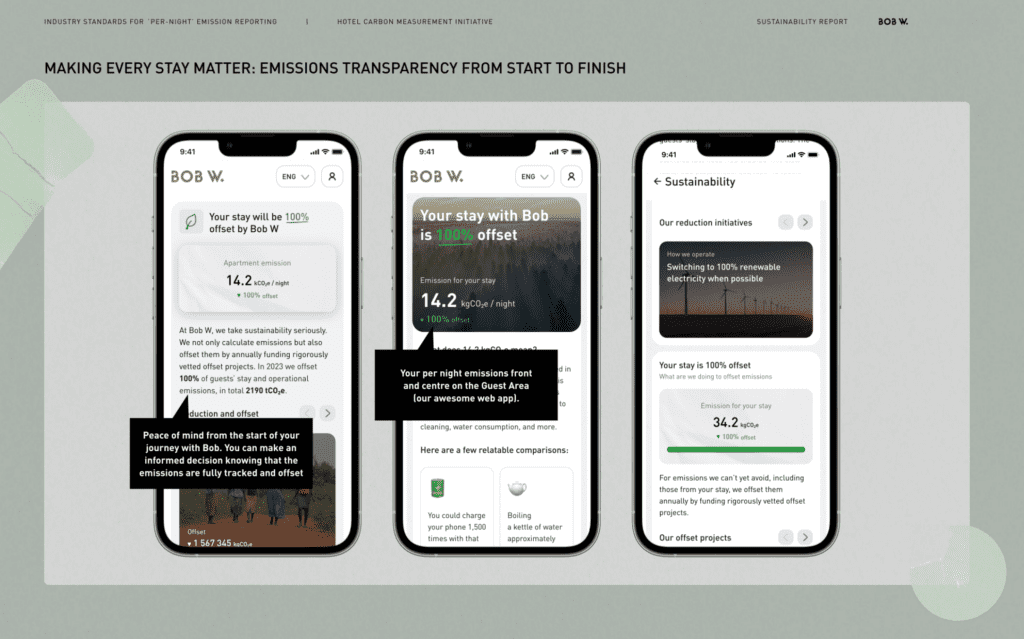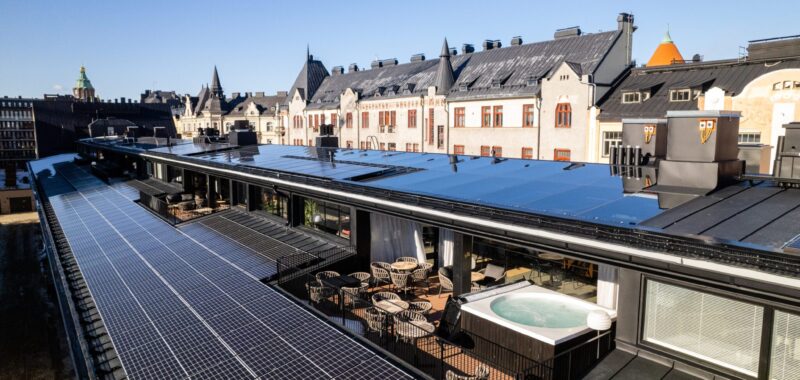The owners of a short-stay apartment rental firm, which operates over 4,000 units in 18 cities in Europe, had been calculating the greenhouse gas emissions across its business for years. However, they recently realized their measurements missed key sources of emissions.
Niko Karstikko, co-founder and CEO of Bob W, told Skift that the company, like many in the hotel sector, used the hospitality carbon measurement initiative (HCMI).
“The HCMI was created as a common standard that the sector can use and to have some kind of common denominator and that is great,” Karstikko said.
“At the same time it was clear that our figures missed so many aspects of things that we create emissions on. We were not getting the full picture.”
The World Sustainability Hospitality Alliance created the HCMI tool with the hospitality sector.
It is used by over 66,000 hotels accounting for over 8 million rooms and is highly regarded in the industry for standardizing emissions counting.
“HCMI helps hotels to identify emission hotspots and take action where needed. It aligns with international carbon accounting standards and is importantly, free to use, making it accessible for hotels of all sizes, from small independent properties to major chains,” the WSHA told Skift.
“Our HCMI tool provides a standardized, credible, and user-friendly approach to measuring the carbon footprint of hotels’ operations, known as Scope 1 and Scope 2.”
Scope 1 includes direct emissions from a hotel such as on site boilers and vehicle fuel use. Scope 2 includes more indirect emissions, such as purchased electricity, heating, and cooling.
Bob W took this further and added more areas from what is known as Scope 3, which includes indirect sources not owned or controlled by hotels and short-term rental companies. This category would account for emissions emitted to produce furniture, for example.
“We decided to add into the emissions per night things like waste, furniture, fixtures, equipment, cleaning products, consumables, food, drink and water use. Furniture, for example, is a really important one. The emission intensity of furnishing a hotel is significant,” Karstikko said.

Bob W guests can see how much was emitted during their stay per night.
This expanded method, developed by Bob W and a consultancy firm called Furthr, revealed much higher emissions than expected. For example, one Bob W property in Finland reported an average of 1.48 kilograms of CO2 equivalent per night (kgCO2e/night) using HCMI. With the new method, the figure rose to 19.7 kgCO2e per night.
Karstikko said the company is taking steps to reduce its environmental impact. It switches to renewable energy where possible and designs apartments that automatically turn off electricity and air conditioning when unoccupied.
“We offset the emissions we can’t reduce at the moment so it is paying for your sins but we feel like it’s the responsible thing to do in the interim while our emissions decline,” he said.
Could Larger Hotels Scale This Approach?
Paul Dunca, COO of Furthr, who helped ensure more emission areas were covered, believes large hotel chains could adopt this approach.
“Large hotels will have suppliers that will actually have very standardized furniture, which means that you’re actually speaking to a single factory when it comes to the furnishing of 100 hotels,” Dunca said.
He said toiletries is another area that results in emissions from suppliers’ production processes.
The WSHA said it is developing its tools over the next year.
“As a global charity, the Alliance brings the industry together to collaborate and we welcome innovation and the information shared. We developed the open-source methodology for the industry and transparency, third party verification and Scope 3 are fundamental to the new tools that will be coming out over the course of this year and 2026,” the WSHA said.
Skift’s in-depth reporting on climate issues is made possible through the financial support of Intrepid Travel. This backing allows Skift to bring you high-quality journalism on one of the most important topics facing our planet today. Intrepid is not involved in any decisions made by Skift’s editorial team.

